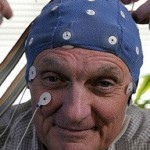The QEEG (quantitative EEG, a map of brain electrical patterns referenced to normative databases) issue is major in neurofeedback circles. Most of us old-timers (I go back to 1989 with EEG feedback, 1979 for biofeedback) don’t really see a need for QEEG in determining protocols–it is definitely not necessary for the three most often used systems in at EEGym® (LENS, Zengar Neuroptimal, and BrainPaint). But I’ve come around to see its tremendous value diagnostically; sometimes it can tell us what is wrong with the patient with dramatic clarity, whether it is old head injury, sleep disorder, ADHD, headache, or generalized memory problems.
We acquire the EEG meticulously in our own office and send it for two-stage analysis to an international team of experts (Juri Kropotov PhD, Russian Academy of Sciences, and Jay Gunkelman, Q-Pro, USA); the results are interpreted and are usually back in less than one week.
IMPORTANT INSTRUCTIONS
- The client should have clean and dry hair for the appointment.
- Wash hair with a ph neutral shampoo, such as Neutrogena non-residue shampoo.
- Avoid Conditioner. Do not use any hair products (i.e. hairspray, gel) the day of the test.
Please note, if the appointment for QEEG must be rescheduled because of hair preparation problems, we must charge an additional $150.
- Do not drink anything with caffeine within 3 hours prior to the test. Drinking water is best for the QEEG as it hydrates the skin.
How is a QEEG Brain Map recorded?
 Recording of the QEEG involves placing an elastic cap on the head, with 19 sensors held in place on the scalp. Nothing goes into the skin of the scalp itself; a syringe is used to squirt a gel (electroconductive medium) into the holes in the cap, so it will be between the hair strands.
Recording of the QEEG involves placing an elastic cap on the head, with 19 sensors held in place on the scalp. Nothing goes into the skin of the scalp itself; a syringe is used to squirt a gel (electroconductive medium) into the holes in the cap, so it will be between the hair strands.
In addition, a clip on each earlobe provides a reference point for the brain activity. Once the cap has been placed, each of the 19 sensors is checked to ensure that it has a good connection with the scalp. The electrical activity at each of the 19 scalp sites is then recorded and calculated by comparing it to the more electrically neutral earlobe. Data on the electrical functioning of the brain is recorded simultaneously at each of the 19 sites. (In the picture on the left, Alan Alda wears the cap for his PBS TV show, Scientific American Frontiers. Note, at EEGym, we do not normally put sensors on the face to record extra-ocular muscle movement).
